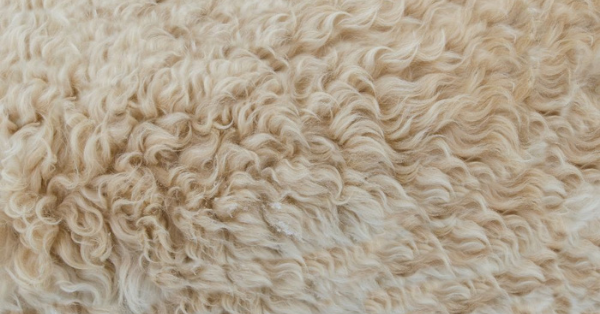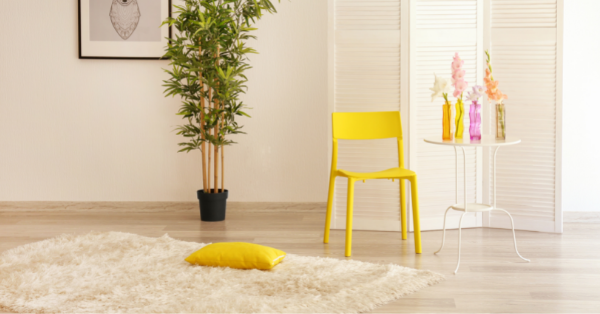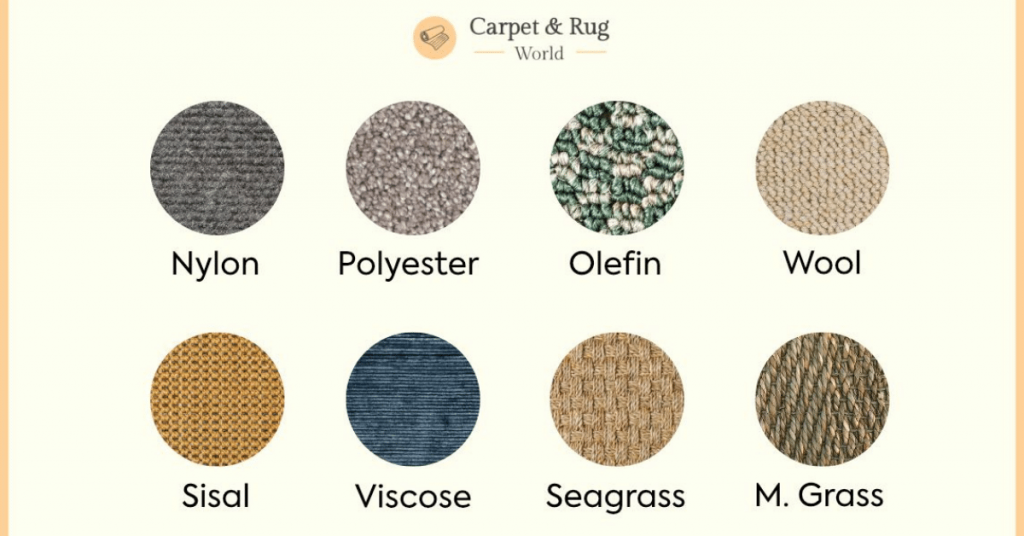You’re unaware of the different types of fibers that are in mainstream use for carpet production. Depending on whichever one is in use, the quality is either superb or substandard. Maybe you overheard a salesman favoring one type over another. This opportunity might be the best to take advantage of to understand the difference between natural and synthetic fibers.
Generally speaking, natural fibers have a better reputation as being eco-friendly and safe for health, and synthetic fibers as being inexpensive and easy to clean. However, natural fibers are usually more expensive (especially if the material in question is wool).

As the name suggests, natural fibers come from sources found in nature. On the other hand, synthetic fibers are artificial creations that come in existence in controlled conditions. Whatever you do, never buy a carpet just because it pleases your eye. Knowing more about natural and synthetic fibers will ensure you make a fantastic purchase decision.
If you’re about to purchase a carpet soon, don’t forget to check out this useful guide. I believe it will help you make the best decision possible. Capture this chance to read it to learn more about the types of carpet fibers.
9 Carpet Materials and How to Choose the Right One for You
If you’re about to buy a carpet you need to know about the different fiber materials. They all have their pros and cons, so read this to choose wisely!
The addition of an elegant carpet will make your living space appear more stunning. However, if the floor covering isn’t too durable, you will feel like your money has gone to waste.
The quality of your carpet should be top-notch. So let’s jump right into the matter and learn more about different types of fibers.
Natural Fibers
You put in all your effort to select the best decor for your living space. Therefore, it makes sense for you to have concerns about the quality of a carpet made with natural fibers.
Resources that come from the natural environment include cotton, jute, and wool. After some processing, the fibers extracted from these resources help in creating stunning carpets.
Types of Natural Fibers
After being harvested from the environment, raw material processing allows the extraction of natural fibers. While most of these fibers come from plant sources, in some cases, they come in our possession through animals (think wool).
Don’t be fooled into believing that every type of natural fiber can end up in a carpet. While almost every type of natural fibers is highly useful in the textile industry, only a few come handy in the production of floor coverings. The ones that are fit for this task include:
- Wool
- Cotton
- Jute
- Silk
You don’t need to excessively strain your brain to see why wool is beloved to the public. After all, it effortlessly exudes a sense of softness, luxury, and grace. The material’s acquisition is possible due to animals that greatly benefit from being shorn. Shearing is of prime importance for their hygiene. Therefore, the sourcing of wool is considered pretty eco-friendly.
The key benefits associated with wool are strong resistance to water and flames, hypoallergenic behavior, and resilience to shape distortion.

Cotton is a soft fluffy fiber that is a staple material used in the textile industry. Even though it is used in carpets too, it is nowhere as resilient as wool. It is not a good idea to place a rug made with cotton fibers in an area with high footfall. It just won’t withstand the pressure and will eventually wear out.
Mostly cotton fibers are used to design bath, throw, and kitchen rugs with neutral colors. Since they are soft to the touch and give a cozy vibe, they may have someplace in your home.
Jute originates from the culturally rich continent of Asia. It is a plant fiber that is incredibly soft to touch and is commonly used as a backing material for carpets. Since it lacks sturdiness, it is sensible to keep jute rugs in low-traffic areas. Perhaps you should consider getting one for your bedroom.
The best thing about jute fibers is that they are pet-friendly and require low maintenance. All you need is a little vacuuming here and there, and you are good to go.
The soft and luscious fabric known as silk is synonymous with luxury. Since insects like silkworms produce it, this material is also a natural resource. The process of acquiring it is immensely demanding, which is why it is so expensive. Since it asks for a considerable price, rugs made with silk fibers should be visible to others. After all, everyone should be able to see it in its full glory.
If you’re the type who admires bold statements, let a silk carpet do the talking for you. Its presence can transform any room with its stunning luster.
Durability
The durability of natural fiber carpets is a prime consideration. After all, it determines how long it will perform well.
Different kinds of natural fibers exhibit distinct levels of sturdiness. Wool carpets are likely to last for a decent amount of time. They are perfect for high foot-traffic areas since they can bear the extra pressure. However, cotton or jute is likelier to wear out sooner. Therefore, these types of fibers are not suitable for the same busy areas.

Even a brief look at a silk rug reveals that it is more delicate than wool. They are low on durability and are hence, not a practical choice for living rooms.
While natural fibers are not always the strongest, they may be appropriate for places with low footfall. If you’re striving to be eco-friendly, perhaps you should consider purchasing them.
Maintenance
Natural fibers are mostly a little more demanding when it comes to conservation except for cotton.
Wool is highly absorbent and hence, takes in a lot of dirt. Cleaning a rug made of this fuzzy material is, therefore, moderately strenuous. Similarly, silk rugs are not suitable for the faint of heart as they also require a lot of care.
A carpet made of jute is not easily washable. Therefore, if you have one, stain prevention may be a feasible strategy to deal with it.
Cotton exhibits a distinct behavior as they are straightforward to clean. It is truly delightful to have a carpet that is lush, soft, and well-behaved.
Impact on the Environment

If you’re motivated by being environmentally friendly, you should get yourself a rug made with natural fibers. Since the resources used to make these carpets are sustainable and sometimes renewable, they are ethically more favorable to use. Moreover, the biodegradable behavior they exhibit will also eventually benefit the world.
Durability
If your residence houses anyone who is an allergy sufferer, you should consider installing natural fiber carpets. Such rugs are hypoallergenic, which means they discourage the growth of things like bacteria and dust mites. This quality is especially true for wool, which is kind to both the animal kingdom and humankind. Pets are safe when they step over rugs made of wool fibers.

You should also try to ensure more safety indoors if a baby is to live there. Infants are at higher risk of developing health issues since their immune system is still growing. It is essential to protect them by reducing the level of toxins in the environment when possible. A carpet made of natural fibers is efficient at doing just this. So get your hands on one as soon as possible.
Synthetic Fibers
Almost all modern rugs with their vibrant colors and unique designs are made with synthetic fibers. Synthetic materials used to make them are created artificially. The most popular one being nylon. Other synthetic carpet fibers are petroleum-based, like polyester or polypropylene.
Let’s have a closer look at the various types of synthetic fibers.
Types of Synthetic Fibers
The creation of synthetic fibers happens in controlled conditions with various complex chemicals. Most modern carpets boast synthetic fibers.
The main types of synthetic fibers found in the market include:
- Nylon
- Polyester
- Polypropylene
Nylon is by far the most mainstream residential carpet material out there. It is highly sought after because of its durability and stain-resistance. This versatile fiber is highly affordable and practical to use. However, it can potentially be used to create a top-notch rug too. The unique way in which it withstands abrasion makes nylon carpets ideal to be placed in high traffic areas.
Polyester fiber comes into being as a result of a chemical reaction occurring between air, coal, petroleum, and water. It is pretty durable. However, you should take caution at keeping this material in your homes. Polyester is known to emit gases called volatile organic compounds in the atmosphere. Therefore, it might not be a good idea to keep a carpet made from this type of fiber at home.

Polypropylene fibers are great dupes of wool. It’s the unmistakable similarity to wool that may explain why it is the second most sold carpet fiber. These thermoplastic polymers are produced in controlled industrial conditions. The resultant synthetic material is sturdy in nature and soft in texture. It is pretty cheap and can easily be cleaned, which makes it an attractive carpet fiber. However, it is not eco-friendly at all since it is machine-made.
Durability
Synthetic fibers enjoy an upper hand when it comes to durability. With inexpensive modern designs that can withstand heavy wear and tear, they highly appeal to homeowners. These desirable qualities of synthetic fibers are bundled with a low price tag, which explains its immense popularity.
While buying a carpet made from synthetic fiber, it is vital to ensure you’re purchasing the right quality product. Some salesmen use persuasive techniques to fool consumers into buying low-quality nylon or polyester rugs. Whatever you do, don’t rush into a purchase because of an over-enthusiastic sales professional.
Maintenance
Synthetic fibers are generally easy to clean. They are not as absorbent as natural materials like cotton. Therefore, they require relatively lesser care and attention to sustain their good condition. That being said, you still have to clean them every once and then. Just because they’re highly durable, that doesn’t mean you should forget necessary hygiene measures.
Impact on the Environment
Some of these synthetic fibers, like polyester, release dangerous gases in the air. These emissions are referred to as volatile organic compounds that are toxic. They certainly harm the environment.

Synthetic fibers are low on environmental friendliness. The processes used to create these materials and the emissions they release to make them a significant contributor to global warming. If you’re looking to be eco-friendly with the decor placed in your home, you should steer clear of synthetic fiber carpets.
Threat to Health
The emissions released by synthetic fibers are a threat to vulnerable groups like allergy sufferers. If you have a helpless baby or an older person in your household, you better avoid synthetic fibers. Having an immune system that is still developing or which is deficient can become dangerous with such gases in the environment.
Sometimes the carpet underlay is also made out of synthetic material. Any homeowner who can be vigilant and can evade the use of it should attempt to do so. This threat to health can be avoided if people opt for natural fibers instead of synthetic ones. Not only would this be ethically responsible, but it would also be more beneficial.
Conclusion
No one wants to purchase something unfavorable in quality. Even when it comes to items related to decor, this point stands true. The purchase decision should be backed with a solid understanding of different carpet fibers.
It may be overwhelming to process so much information about natural and synthetic fibers. However, the benefits of knowing more about the things you place in your home outweigh the costs. With this new knowledge at your disposal, you will be able to make the best decisions for your family.
If you’re struggling with the budget, then it is acceptable to buy a synthetic fiber carpet. However, it is always better to get your hands on a more sustainable and eco-friendly option whenever it is possible.
Don’t forget to visit this guide if you’re about to buy a rug online . You will find beautiful shops that sell top-notch carpets over there.

